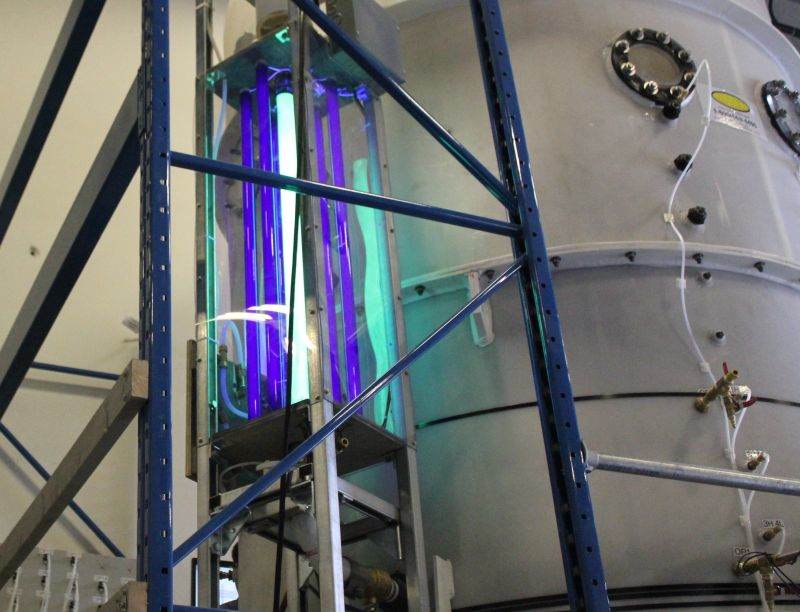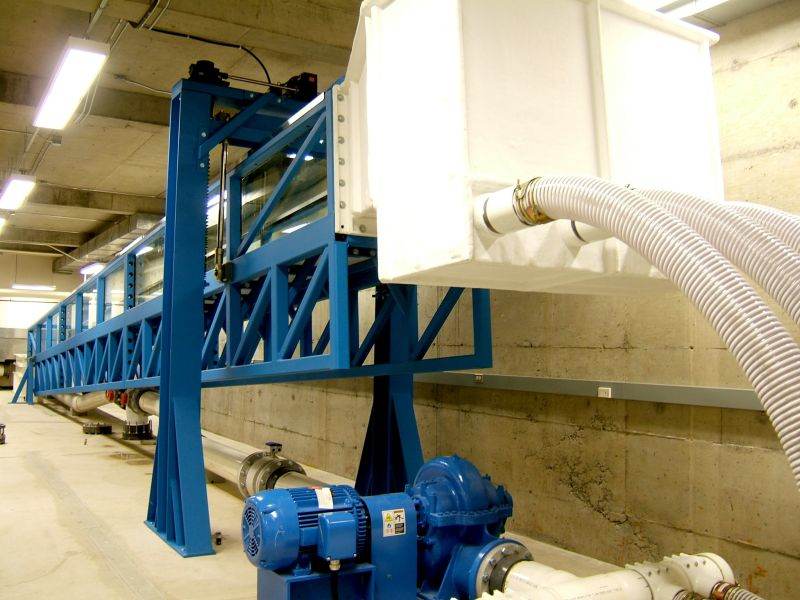Quality in Validity
The quality of the outcomes of any research project is dependent not only on the validity of the experiments but also on the on the quality of the data collected during such tests.
At Coanda, we have been designing and building custom research equipment for experimentation purposes for our on-site laboratories as well as for client sites for nearly three decades.
From Real World to the Laboratory
We specialize in turning real-world challenges into manageable lab-based apparatus. Working from client drawings of field installations or devising complete systems from process requirements, the designers, engineers and scientists at Coanda are accustomed to developing entirely custom equipment designs. Scale models are conceptualized, engineered and fabricated to allow maximal access for data collection while meeting the necessary process conditions.
Leveraging the latest Computer Aided Engineering (CAE) and Design (CAD) software is key to achieving this goal, tools such as SolidWorks, ANSYS FEA (Finite Element Analysis) are all called upon to maximise design efficiency during the engineering equipment design process.
Hands on Experience
The breadth of our experience portfolio and intimate knowledge and understanding of end user requirements stem from the years of direct practical experience designing, procuring and constructing experimental apparatus for research projects and operating that equipment in our laboratory.
The range of technical expertise covers the design of large experimental equipment including water channels, fluidized beds, gravity separators, mixing vessels and hydro cyclones. Many of our flow loops operate using actual process fluids, often featuring multiple phases, elevated pressures or temperature and hostile fluids.
Our Instrumentation & Equipment Design Approach
Our team of Instrumentation and Mechanical Engineers are adept at designing and integrating equipment and instrumentation designs to meet specific project goals. These integrated solutions can and often include standard industrial equipment and high-tech commercially available systems working alongside novel apparatus and measurement techniques developed by our project staff.
Coanda's 10m water channel
one of Coanda's fluidized bed models
Pioneering Measurement Instruments and Techniques
In many cases, standard pre-existing measurement techniques or instruments are not sufficient to meet the needs of a project. In such instances, Coanda offers instrumentation design and develops new techniques and engineers supporting equipment to enable the measurement of a key factor. Such pioneering custom instrumentation systems include:
- laser-based mapping of real-time depth and surface velocity of flow fields.
- helium gas tracer system for use in systems where conventional tracers are absorbed by catalysts
- phosphorescent particle tracer systems
- salt and fluorescent dye liquid tracers systems
- geotechnical instruments such as large strain consolidometers.
Standalone Service
As well as supporting the physical modeling programs ongoing at Coanda, our custom measurement development and instrumentation design services are available to customers as a standalone service. In addition to our strong fluid dynamic knowledge base, Coanda has excellent capabilities in optics, analog, and digital electronics as well as software development on a variety of platforms that allow us to pull together a diverse team and tackle the hardest measurement problems our clients are facing.

UV particle tracer on a circulating fluidized bed
In-house High-tech Instrumentation Design
Laboratory-based research projects have necessitated the need for an inventory of some high-tech commercially available instruments and the expertise to use them. A sample list of the instruments we currently offer is outlined on our Facilities and Instrumentation page. Some of these custom systems can also be purchased on our products page.

laser surface profiling
Custom Research Equipment Design
There is more to designing quality research equipment than instrumentation alone. The mechanical components must also integrate well to ensure the instrumentation not only performs at its peak but also the apparatus must be designed to be flexible thus allowing modifications or adjustments to facilitate performance changes. Over the years our engineers have learned how to recognize and include these necessary features into the designs.

tilting water channel used to study river flows
For more detailed information on previous designs, please refer to our Project Highlights Publications section, some of which are showcased below.

